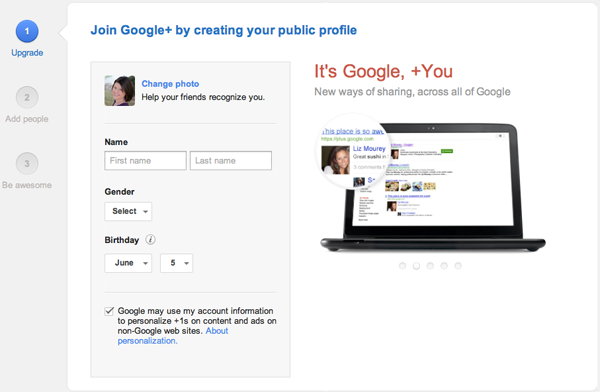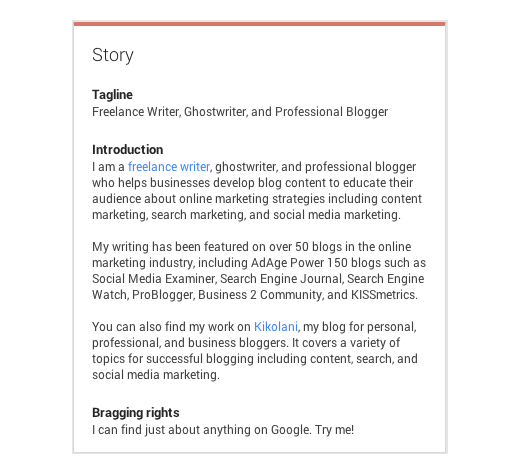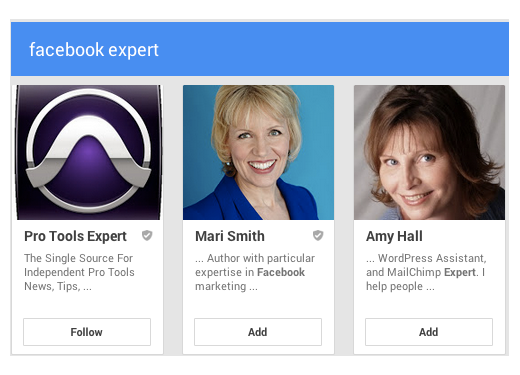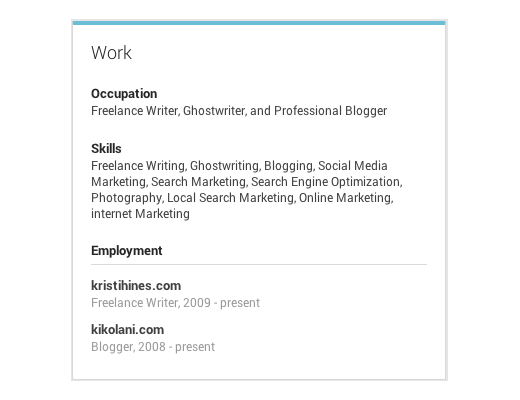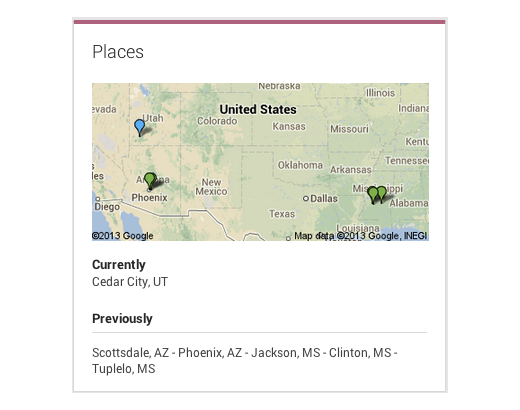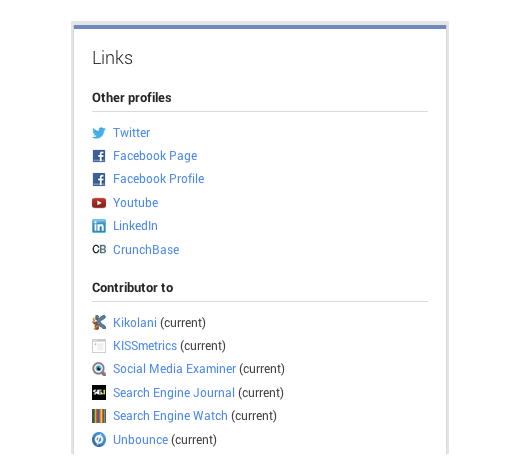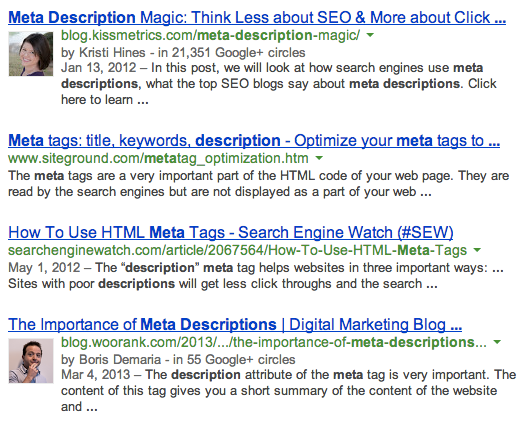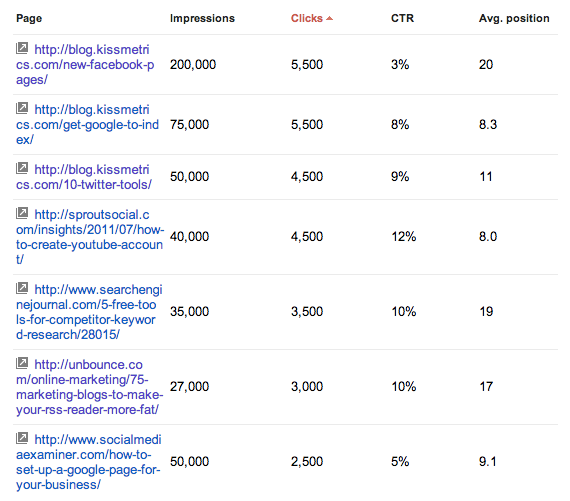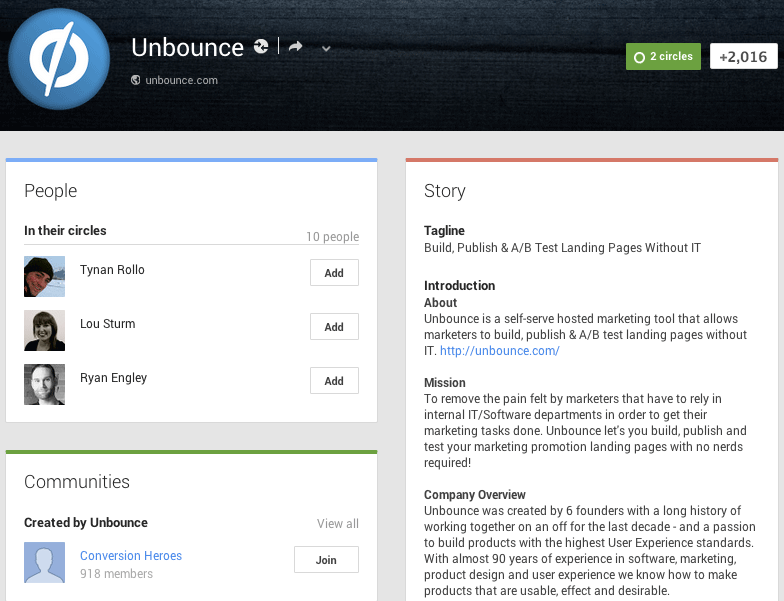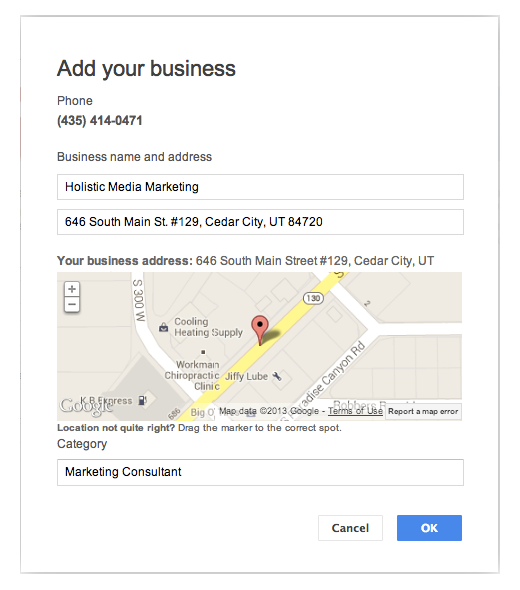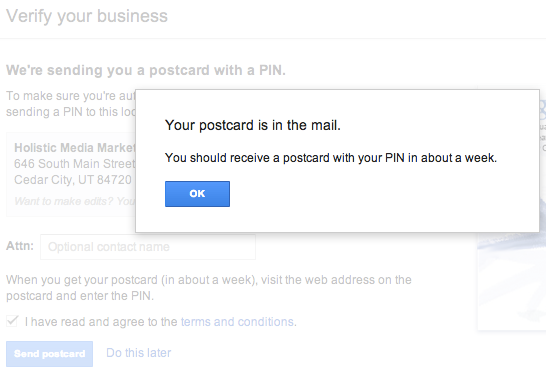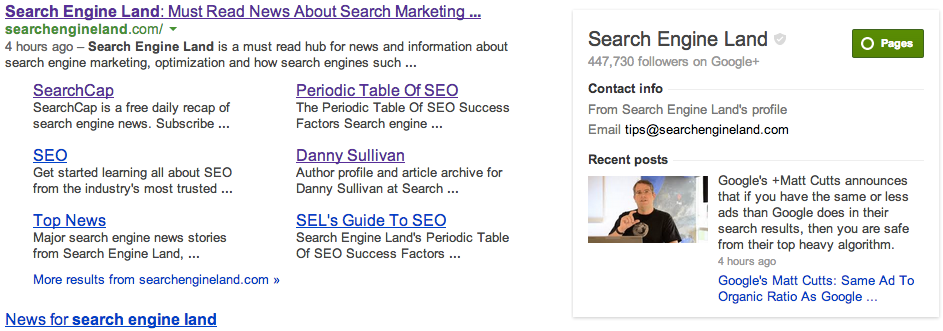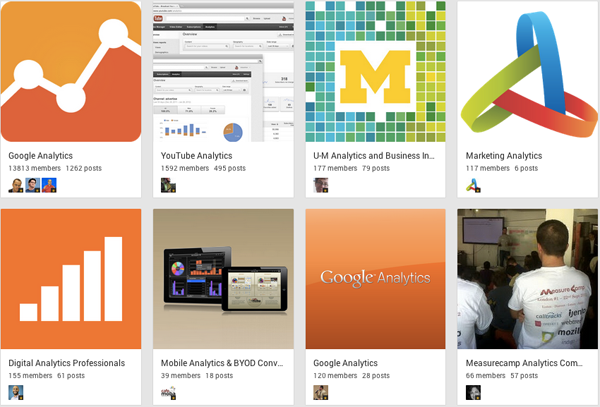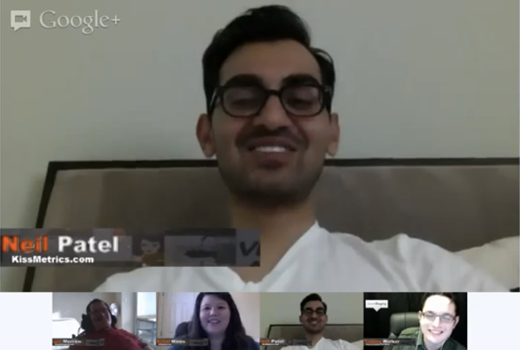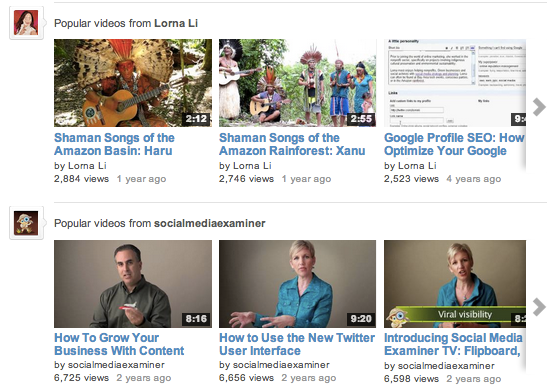Since its launch in 2011, Google+ has been growing non-stop and now has 359 million active users according to
Business Insider. There also have been a lot of changes made in their platform during that time. In this post, we’re going to look at everything you need in order to have a successful Google+ experience.
Setting up Your Personal Profile
If you have a Google account for other services like Gmail, Analytics, Webmaster Tools, YouTube, or other Google services, then you may have a Google+ profile already. To find out, sign in to your main Google account through one of the services you use and then visit
Google+. If you do not have a profile, you will see the following screen.
You will want to create your Google+ profile with the Google account you use most often. Do not use an email address that isn’t yours (such as an email for your workplace or college) and do not use an account you share with others, as this will be your personal profile.
Now, let’s look at the most important elements of your personal Google+ profile.
Cover Photo – Cover photos on Google+ profiles and pages are huge – 2120×1192 pixels to be exact. This means you must have a high quality, high resolution image that best represents you. Google+ does offer some stock photos to choose from, but you don’t want to be one of the thousands using the same colorful paper, bubbles, etc. that everyone else is using.
Story – Under your profile About tab, you have several sections of information to fill out. The first is your story. This is where you fill in your tagline, introduction, and bragging rights.
These pieces of your profile are important. Up to 77 characters of your introduction will show up in Google+ search results when people are searching for others who have particular keywords in their profiles. The snippet of your introduction used will be the part that most closely matches the keywords searched.
Since your links appear further down your profile, you can use the introduction section to hyperlink to your most important websites.
The tagline is important because it shows up in regular search results listings.
Work – The work section allows you to add information about your current occupation, skills, and employment.
The most current employer you list will show up next to your profile photo at the top, so make sure the information is up to date. The same goes for your education section.
Places – If you would like people to know where you have been and where you are now, add those locations here.
Your current location will be shown next to your profile photo at the top.
Basic and Contact Information – In these sections, you can give as much (or as little) information as you choose. Basic Information allows you to share your gender, networking goals, birth date, marital status, and other similar data. Your Contact Information allows you to share your email, phone, physical address, and other contact information. Note that if you use a few different email addresses and you want people to find you through them, then you should include them in your contact information.
Links – Your links section is divided into three groups: Other Profiles, Contributor To, and Links. Other Profiles represents your other social media profiles. This is where you can add your links to Twitter, Facebook, YouTube, Quora, and other social networks.
Under Contributor To, you will add links to the sites you contribute to. Essentially, this should be links to your author pages on blogs you guest post for and contribute to regularly. It’s important to add links to these pages so you can claim Google+ Authorship for the content you create and boost your author rank. Now you also can specify whether you are a current or past contributor to a particular site, which allows you to claim your authorship while directing visitors to the places they can find your most current work.
Last, but not least, are your general links. These are links to your main website and other sites of interest that you want to share with visitors. This is why it’s a good idea to add some links to your introduction, because otherwise, the links you probably want to share most will be at the very bottom of your profile.
Building Authorship Authority
If you are trying to build up authority in your industry, one way to do it is by building Google+ Authorship as mentioned earlier. You do this by linking your Google+ personal profile to the content you create throughout the web, from your own site to other blogs and online media outlets.
What are the benefits of building up your Google+ Authorship? First off, you get your photo next to your content in search results, which can help boost the click-through rate. You can see how readers easily could use authorship to judge the authority of the content.
Also, people can click the by link to discover more content by you on any site you contribute to in search results.
As an author, you can visit Google Webmaster Tools and use Author Stats under Labs to see analytics data about posts claimed under your Google+ profile from any website. Included are the number of impressions a particular piece of content receives in search results, the number of clicks, the click-through rate, and the average position in search results.
If you’re a fan of Matt Cutts’s videos on the Google Webmaster Help channel, you probably have heard him mention that Google is working on identifying authorities in particular spaces with the intent of making sure that content by those authorities ranks well in search results. You can catch that around the 4:30 mark of the video
what to expect from Google in the next couple of months recorded in May.
So how do you claim authorship for the content you create? There are two ways. The first is by
having an email address on your Google+ profile from the domain you create content for. If you contribute to many sites, that may not be an option for you.
The second is by having a link to your content (or author page) from other sites on your Google+ profile under the Contributor To section and a
link to your Google+ profile on each of those pieces of content. Also, the link to your Google+ profile should have an
?rel=author appended to it to specify that you are the author of the content. You can place this link in your author bio.
To test if your Google+ authorship is working, simply use the
Rich Snippets Testing Tool. If anything is missing, it will help you find out what it is and how to fix it.
Setting up Your Page
To create a Google+ presence for your business, you will need to
create a page. To get started, select the type of page you are creating – local, product, brand, company, institution, organization, arts, entertainment, or other. Each will have a large variety of subcategories to choose from.
Except for the pages in the local category, Google+ page setup is similar to personal profile setup with a few nice variations. The biggest difference is that instead of having your employment, education, and location information next to your profile photo at the top, your page will have a link to your verified website.
Other notable differences include an expanded story section for different types of pages (such as Company, Mission, and Founded areas for companies) and a section for communities created by the page. Below the above shown areas are your Google+ page links and profile information.
If you want to give multiple people the ability to manage your Google+ page, you can do this by going to your Google+ page settings and clicking on Managers. There, you can add anyone who is following your page as a manager. Managers have
limited access compared to page owners, but they can do the basics such as post content, edit circles, edit page information, and change the settings. Page owners and managers are not publicly listed on the page itself.
Getting Local
If you have a local business, you must have a Google+ page. Google+ took over Google Places, which means that if your local business had a Google Places listing, it’s now a Google+ listing. So when you attempt to create a page in the local category and enter your phone number, Google+ will find your local page and connect you to it. If your business isn’t on Google+ already, or formerly on Google Places, you will get to add a new listing for your business instead.
The setup of a Google+ local business page is very different from the regular Google+ page setup. You will have to add your business information – physical address, phone number, and website – and then have it verified by Google before your updates will go live. Verification happens by phone or by postcard.
Once your Google+ local business page is verified, you can start adding additional details, updates, and photos, and you can even create events. Note that local business pages have a few extra bits of information right at the top along with the website link.
You also will get free local business insights about how your customers discover your business online and information about your followers, +1′s, and engagement.
Another major difference between regular Google+ pages and local business pages is the option for visitors to leave reviews. The more positive reviews your business has, the better it is likely to do in local search results. If you do happen to receive negative reviews, you can reply to them publicly on your local business page, showing future visitors that while bad experiences do happen, you are willing to do your best to help rectify the situations.
Planning Your Google+ Content Strategy
On Google+, you can post updates with text only, photos, videos, or links. Within your updates, you can mention other people and pages that you are following by typing their name after an @ symbol. You also can add hashtags to your Google+ updates to help them receive wider exposure.
One key thing to remember about your Google+ profile and page is that when they show up in search results, they will show your latest status update.
Therefore, if you want to show that you are active on Google+, you need to keep your profile and pages up to date.
As with any social network, if you’re unsure what to post on Google+, do a bit of research into what your competitors are posting. Look at the types of updates that work best for them in terms of engagement (+1′s, comments, and shares) and try similar types of updates with your audience.
Also, keep in mind that you can target your updates based on your circles. For example, if your company wants to send updates to only your employees, create an Employees circle and send it to just that circle.
However, when designating specific people/circles for your status updates on Google+, remember that any update which is not Public will not be seen in search results or shown to people you are not following. Therefore, you probably will want to make most of your updates public so that everyone can see you are active on your profile and pages.
Local businesses also should consider adding some locally relevant content to their updates. This can help attract even more local followers to your Google+ local business page.
Building an Audience
Google+ is similar to Twitter in that you can follow anyone, they will be notified when you follow them, and they will have the option to follow you back. If they do not follow you back, you may not get to see or interact with any of their updates beyond the ones they make public. Here are some tips for building a following for your personal profiles and pages. Just use the dropdown menu at the top right of your Google+ screen to select the profile or page you want to use throughout Google+.
- Add a Google+ badge to your website so people can follow you immediately.
- Use the Google+ find people page to find connections from Gmail, past workplaces, past schools, and other services (for personal profiles only).
- Use the Google+ search box to find people and pages with similar interests, follow them, and interact with their public updates.
- Join (or create) and participate in Google+ communities (personal profiles and pages).
- Occasionally share the link to your Google+ presence on other social networks to encourage others to follow you.
- Include a link to your Google+ presence in your email signature and newsletter.
- Leave reviews for local businesses to gain more local exposure. While you can leave reviews as both your personal profile and as your business page, reviews by your business page will not always be shown to the public or count toward the total number of reviews.
As you follow others on Google+, be sure to organize them in relevant circles, which are like friends’ lists on Facebook. You can target updates to people in specific circles on both your profile and your page. You can narrow the view of your newsfeed to specific circles. The better organized your circles are, the better your Google+ experience will be.
Using Google+ Communities
Participating in Google+ communities can be a terrific way to gain exposure for yourself and your business. The great thing is that unlike Facebook pages or LinkedIn company pages, you can use your Google+ page just like you would your personal profile to create, join, and engage in communities.
To join and participate in a Google+ community, simply select the profile or page you want to use, then search for
Google+ communities on a specific topic.
Depending on the settings, you will be approved right away or will have to be approved by the owner or moderator. Once you’re a member, you can post status updates in the groups just like you would on your profile or page.
Remember that Google+ has a great spam moderation system in place. This means that if your status update has a link, it may get put into a queue to be moderated. If the owner or moderator of the community considers your update to be spam, they have the option to remove your update and ban you from the community!
If you find a hole in the market, you can create a community using your personal profile or page. To create a community, click the blue Create Community button on the
communities page. Then follow the guide to set up the perfect community to attract the people you want to connect with on Google+. As a public community owner or moderator, know that you will have to regularly go through and moderate the spam so you can approve the legitimate posts by members and remove the rest.
Hanging Out
One of the most unique features available to Google+ users is Google+ hangouts. These are live video chats that you can create with up to 10 participants. You can hold private Google+ hangouts as online meetings, or you can stream live Google+ hangouts for an unlimited number of viewers to watch on YouTube.
To start a hangout, visit the
Google+ Hangouts on Air page. If you’re not ready to create your own just yet, you can see if there are any hangouts on air that you can join with your followers or watch live to see how they go.
Some great ideas for hangouts include forming panels of people to have discussions on topics related to your industry, recording one-on-one interviews, running a webinar using Google+ hangout’s screensharing feature, or hosting a Q&A with your audience. The possibilities are endless. Best of all, you can record all of your hangouts and use them as part of your video marketing strategy.
Integration with YouTube
YouTube now allows you to use your Google+ profile to change the display name of your YouTube channel from your username to your real name. You can see the difference in the examples below.
If you want your YouTube channel to match the name on your Google+ personal profile, then go to your YouTube channel’s settings page and click on Link channel with Google+.
What if you don’t want to change your YouTube channel display to your name? Then check out these instructions to try
linking your Google+ page to your YouTube channel. This will help you link your YouTube channel to your brand vs. your personal profile.
Enhancing Your Website with Google+
The following are different ways you can integrate Google+ with your website.
Google +1 Button – Similar to the Facebook Like button, the Google +1 button allows visitors to your website to +1 a page. You can use it to get people to +1 your homepage or +1 individual product and content pages.
Google+ Direct Connect – This piece of code allows you to connect your website to your Google+ page. When people search for your brand, they will see your website along with your Google+ page at the top of search results.
Google+ Comments – This is similar to Facebook comments, but it’s on the Google+ platform. The option to use Google+ comments is available directly for people using the Blogger platform. WordPress users can install the
Google+ Comments plugin to add this functionality to their blogs.
Exploring the Top Tools
Unlike Twitter and Facebook where you have a lot of management options with third party tools, Google+ has been very particular about which companies they work with. Fortunately, they keep a current list of supported
third party management tools. So far, they all allow you to manage only your Google+ pages. These tools include well-known platforms like
Dlvr.it,
HootSuite,
Sendible, and
Sprout Social.
Analyzing Your Results
Like any online marketing strategy, you will want to look at your analytics to make sure Google+ is both driving traffic and leading to conversions. Google Analytics Social Reports will help you track direct conversions; that is, traffic that comes to your website from Google+ and, within the same visit, converts.
KISSmetrics can help you track a visitor from Google+ who converts on your website, regardless of whether they convert on their first visit or later.
You also can use analytics services like
SumAll and
Social Report to connect to Google+ along with other analytics programs and social networks to see your marketing data across multiple platforms in one place.
In Conclusion
Congratulations if you made it through this guide! If you apply everything you’ve learned, then very soon you should have a great Google+ profile and be well on your way to building authorship authority and a strong local presence for your business (if applicable), engaging with your audience, managing your account with terrific tools, and seeing the results of your Google+ activity. What else would you like to know about Google+ marketing? Please ask your questions in the comments and share your own great Google+ tips, tools, and resources.










